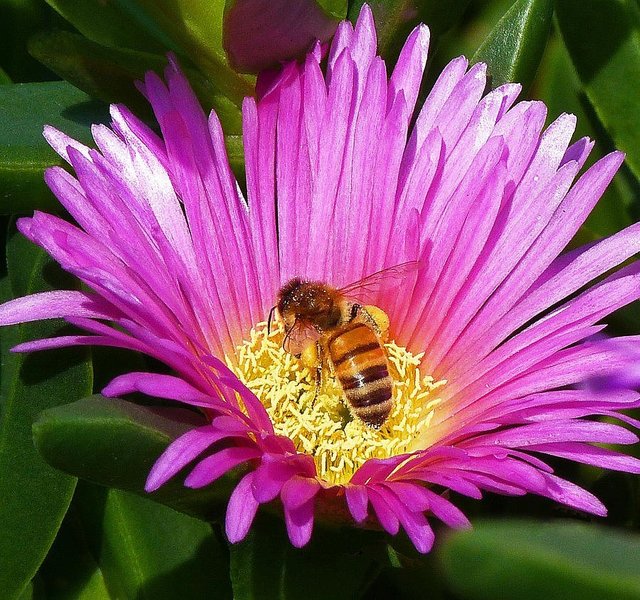RE: Pigface - beautiful plant, unfortunate name.
Carpobrotus glaucescens also known as Pigface or Angular Pigface is a member of the Family Aizoaceae. There are about 30 species in the genus, the majority being native to South Africa. There are 6 species native to Australia which are chiefly coastal in distribution with the exception of C. modestus which is an inland growing species.

image source
The plant produces large, striking, deep pink-purple daisy-like flowers from October to January, but also can flower sporadically throughout the year. The plant produces a red-purple berry fruit, which was used by the native aborigines as a food source. The flesh of the fruit is said to have a taste similar to salty apples. The roasted leaves have been used as a salt substitute. Early European explorers used the plant as an anti-scurvy treatment. The juice of the leaves can also be used to relieve pain from insect bites.

image source
Carpobrotus glaucescens is found growing naturally in coastal areas on sand dunes along the NSW and Queensland coast, north to Rockhampton. It also grows down into the east coast areas of Victoria. Pigface grows on the front of sand dunes and acts as a stabilizer where it helps to bind the sand, this allows more effective sand stabilizers such as spinifex grass to take a hold. Being a pioneer species it is important in paving the way for more complex communities.
content source